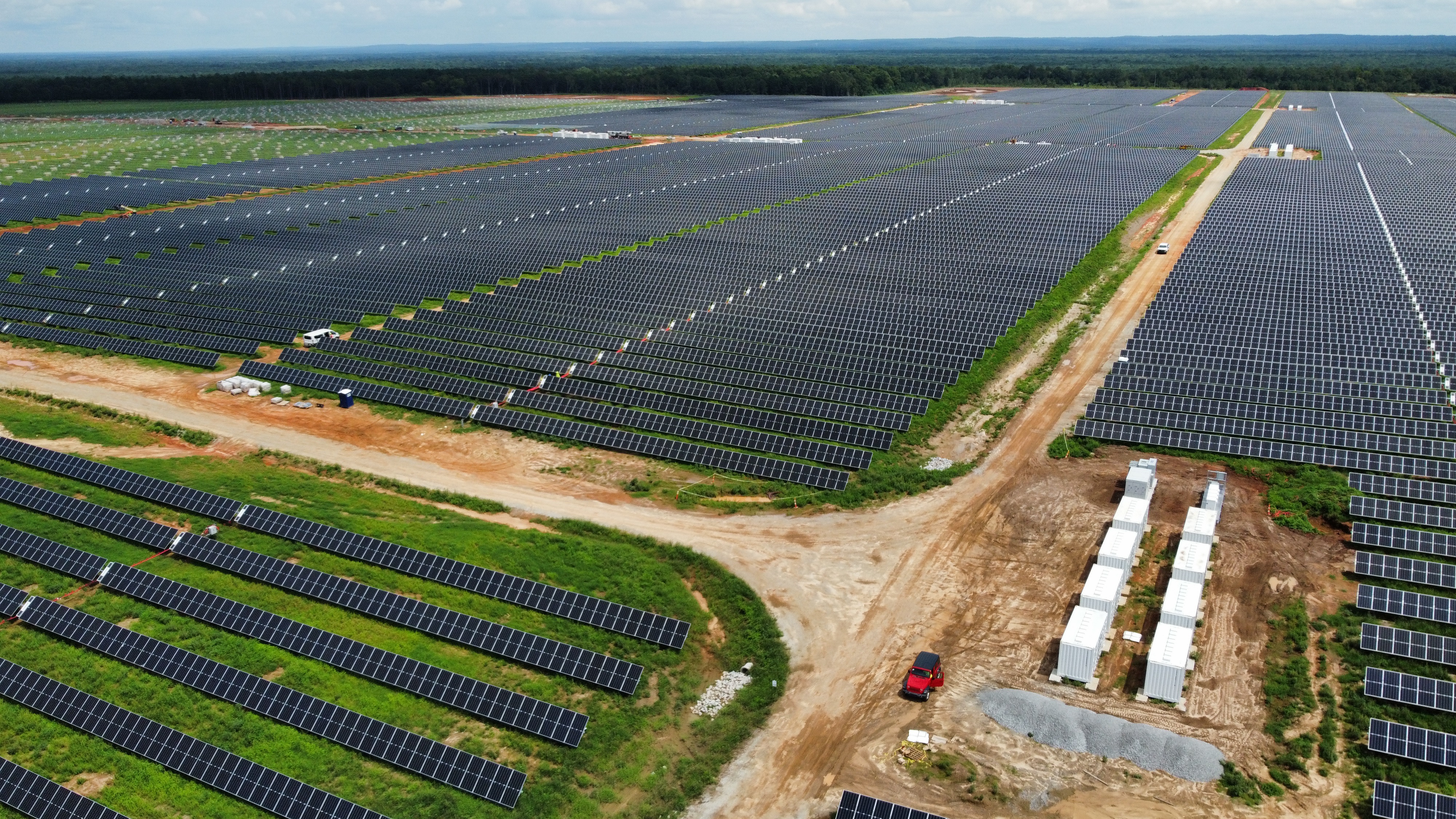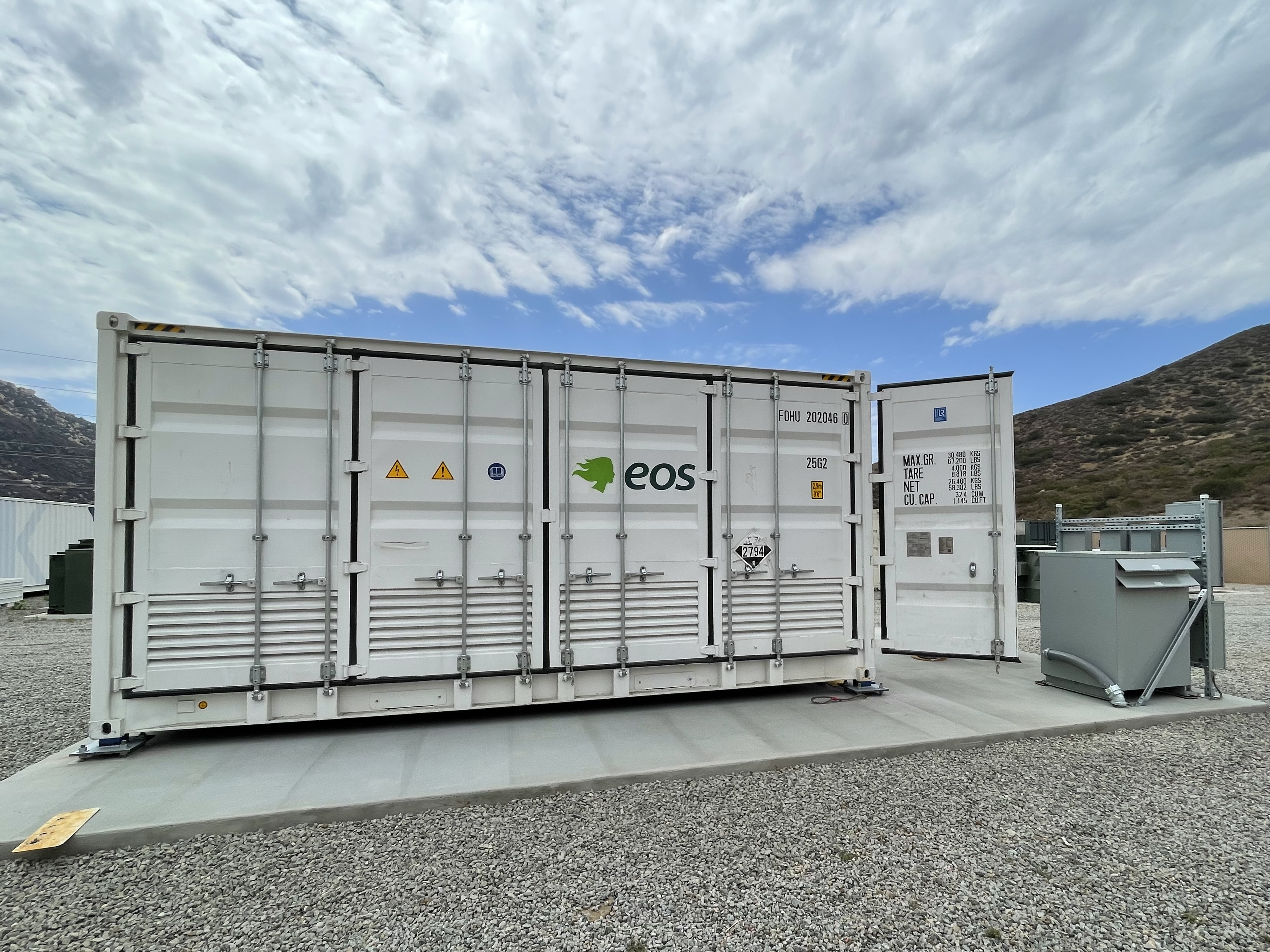Energy Storage 101
From enabling renewable energy adoption to providing resiliency for existing grid infrastructure, energy storage is a critical piece for keeping the lights on in a rapidly evolving energy landscape.
Energy can be “stored” in a wide variety of ways. We keep gas in tanks until it’s burned to produce energy. We pump water into reservoirs until it’s released through turbines to produce electricity. We can even use flywheels and other machines to store kinetic energy. But by far the most common technology that comes to mind when we think about stored energy is batteries.
Batteries have been used to power smaller electronics like toys, watches, or radios for nearly a century, and as new technology has advanced the rechargeability and lifespans for batteries, they have increasingly become vital for powering laptops, phones, and other devices that we rely on every day in our on-the-go, always-connected society. Now, batteries are even being used to power large machines like lawnmowers and electric vehicles, but perhaps the most important recent application for battery technology is for storing power generated by renewables like solar and wind energy.
Empowering renewables
One of the factors limiting more rapid and widespread adoption of renewable energy is “intermittency.” In simple terms, wind and solar energy generation are not consistent enough to reliably meet energy demand, especially when consumption peaks. That’s where energy storage, and batteries in particular because of their relatively small footprint, can help solve an issue that is critical for enabling and accelerating the shift to clean energy. If batteries can be deployed to store sustainably sourced energy and discharge it when winds die down and the sun sets, then renewable energy can more effectively supply cities, towns, and homes with the power they require.

Additionally, because renewable energy is relatively affordable to deploy in comparison to coal or nuclear power facilities, it is quickly becoming economically feasible in many regions to set up enough renewable power generation to exceed demand. The issue is that excess power can damage grid infrastructure. With batteries in the mix, overproduction and storage can become a means for mitigating power outages or offsetting the high cost to produce energy during peak consumption times. In this way, batteries can offer resiliency for the grid and make energy more affordable for communities and businesses. However, this is only possible with batteries capable of storing and discharging energy over longer periods of time.
The importance of duration
“Storage duration” refers to the amount of time a battery can discharge at its power capacity (kilowatts or megawatts) before depleting its energy capacity (kilowatt-hours or megawatt-hours). For utility and grid-scale energy storage applications, durations of 8 hours or longer are critical for unlocking the benefits of battery storage technology for accelerating the shift to clean energy.
While advancements in Lithium-ion technology have led to it becoming a dominant technology in the battery world, duration is the key area where it comes up short. Lithium-ion’s strengths, including a very high energy density and very low self-discharge rate, make it an ideal technology for short-duration applications like inside portable electronics or for powering electric vehicles. However, these strengths are diminished in long-duration storage applications where the number of li-ion batteries that would need to be strung together to achieve the necessary duration becomes costly and creates a significant fire risk.
Many alternative battery chemistries, like Eos Znynth™ zinc-based technology among others, are capable of operating at a wide range of durations and up to 12+ hours. This longer duration capability means that these batteries are able to supply energy long enough to power homes and businesses through periods of limited generation and/or peak consumption. This has been a limiting factor for safely deploying battery energy storge systems (BESS) to help renewable energy replace fossil fuels that are capable of on-demand power distribution.

Enhancing the grid
With many factors pushing the transition to clean energy into high gear, nations, states, utilities, and other organizations are dedicating more and more resources to reducing reliance on fossil fuels to enhance energy security and keep climate-related goals on track. To help capitalize on these efforts, the global energy infrastructure will require significant upgrades and modifications to accommodate new ways for energy to be generated, stored, and distributed. Long-duration energy storage can support this critical transition by providing backup power and stored energy when supply from sections of the grid is interrupted due to modernization, repairs, or decommissioning.
Part of these upgrades will include adding renewables to the grid, which risks creating energy excesses if intermittent production causes supply to outpace demand. Existing infrastructure is often unable to handle these spikes in volume, and utilities and power providers are then forced to waste vast amounts of generated energy through curtailments to prevent significant damage to the grid. Installing more conventional wires, poles, and substations to proactively address the issue is expensive and time-consuming, but long-duration battery energy storage can serve as a means to offload and store excess energy so that it is not wasted.
Grids may also become strained by increased demand, extreme weather, and aging infrastructure, increasing the potential for power outages. Even brief power interruptions can cost millions in damages and create severe issues for municipalities, businesses, and individuals. Energy storage can help by isolating parts of the grid or creating backup power caches to help minimize the impact of blackouts or brownouts. To ensure power availability regardless of grid status, essential facilities, like wastewater plants or hospitals, and commercial entities with hypercritical 24/7 power requirements, like data centers and hospitals, could potentially be equipped with battery energy storage systems, allowing them to continue operations if their energy supply is interrupted. Coupling storage with on-site generation can also be a way to establish microgrids, small power networks that may serve to ensure 24/7 energy access. Microgrids can be used to supply energy in remote locations, or they can help create stability in locations where grids are unreliable or at risk of failure due to extreme weather.
With so much focus on clean energy and the pursuit of a carbon-neutral future, renewable energy has garnered significant attention for its ability to change how we power our world. While energy storage has not received as large a share of the limelight, it is an equally critical piece for accelerating the shift to clean energy. This idea is beginning to take hold, and the result is not only advancements in alternative battery technologies but political momentum to boost the commercialization of these solutions so they may be deployed to reduce our reliance on fossil fuels. Eos is helping lead the way with positively ingenious solutions that are beginning to change the way the world stores power.
